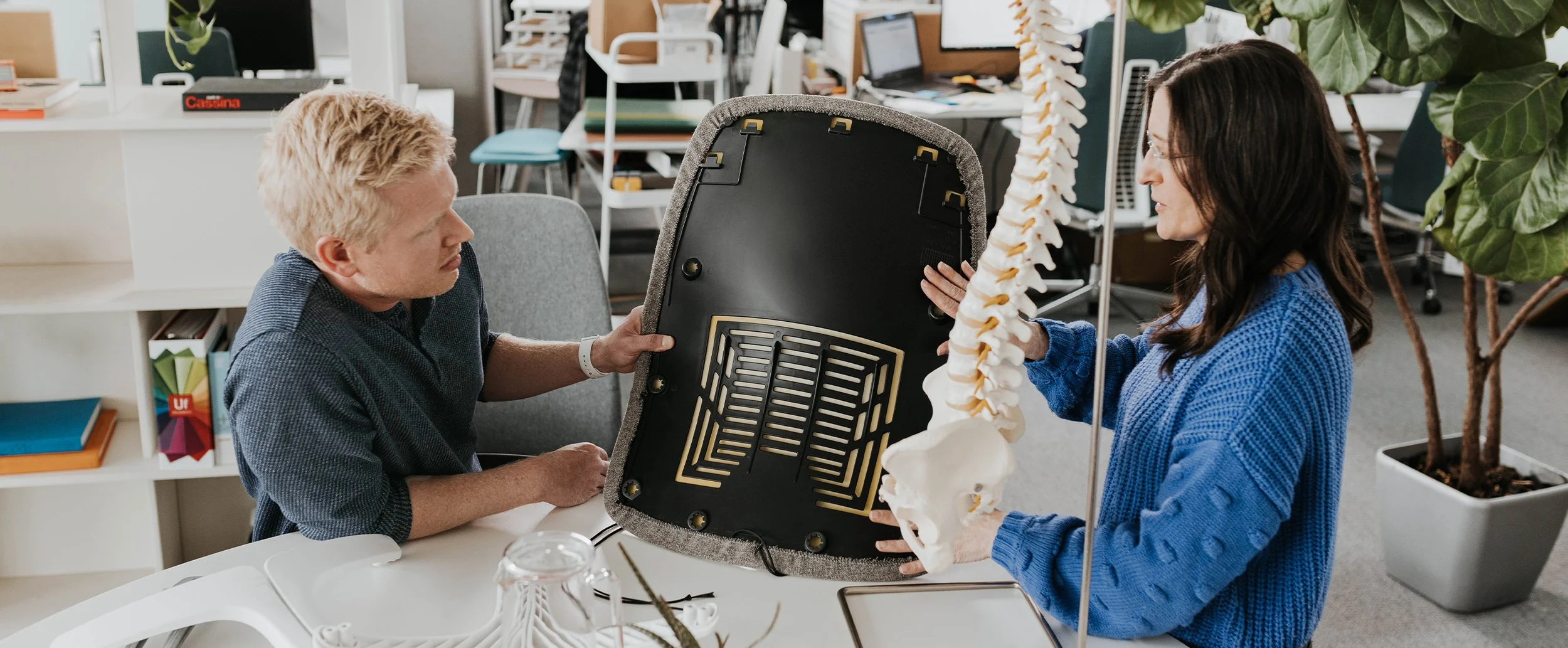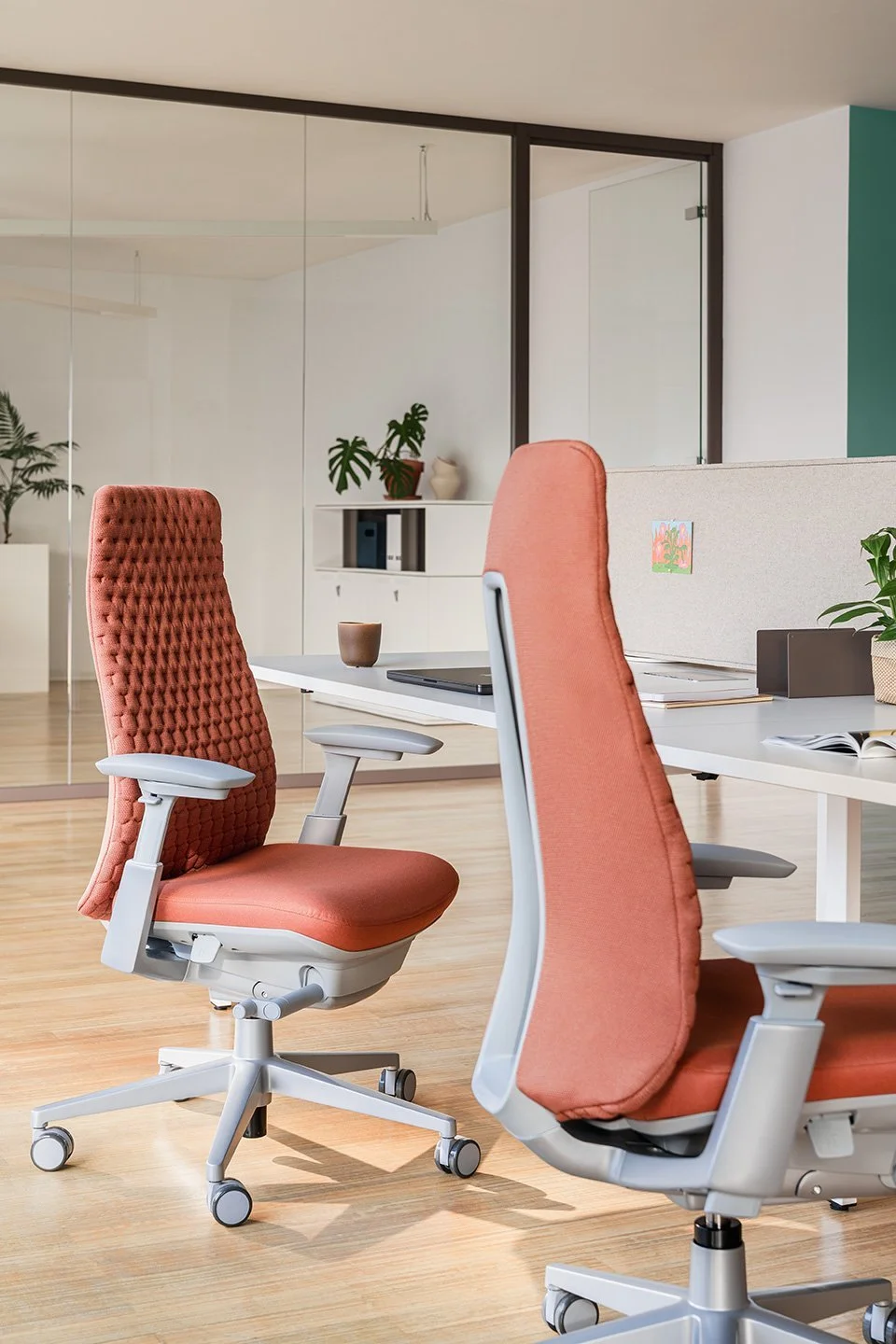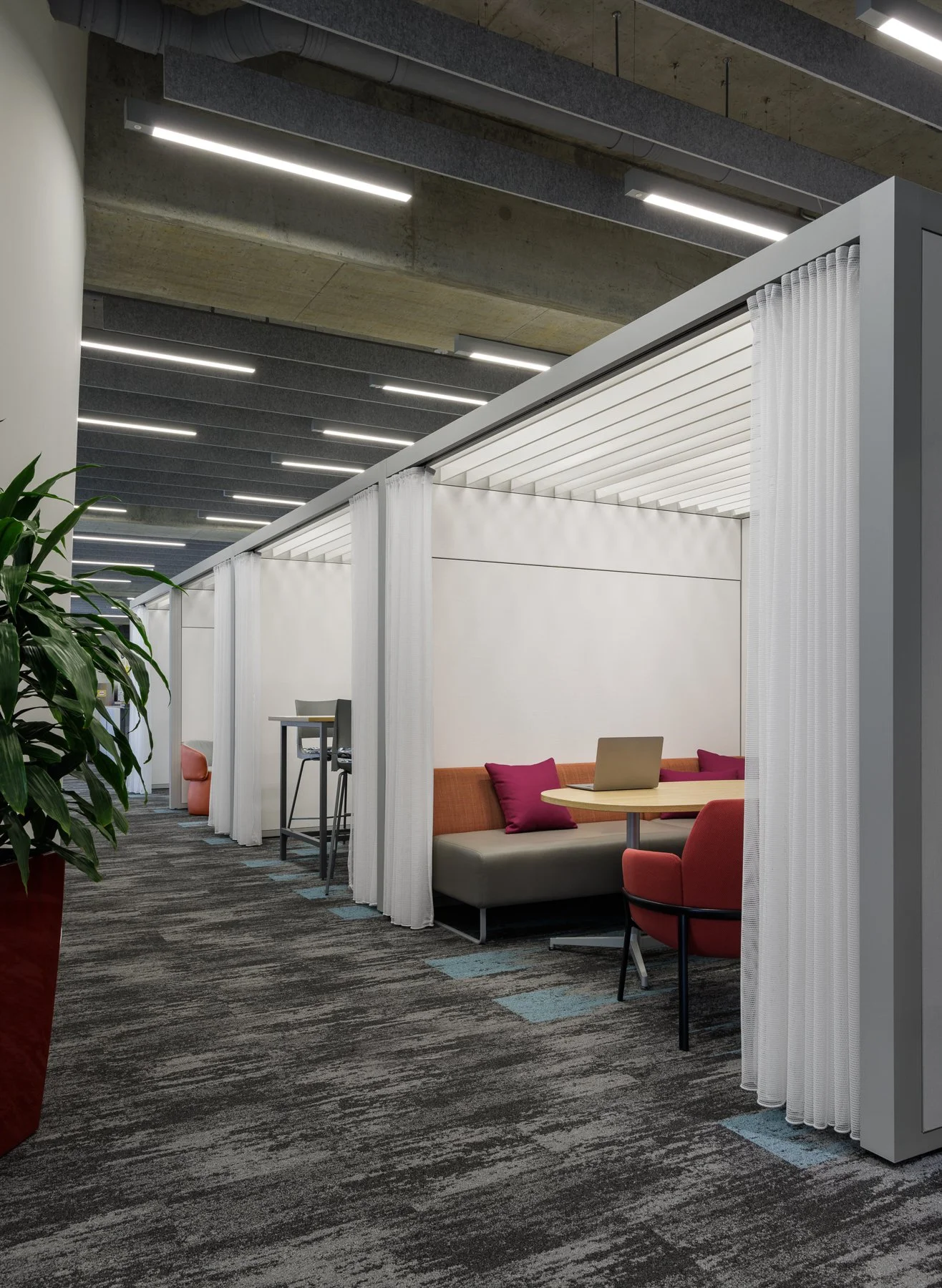How Ergonomic Seating Supports Your Spine Health
For over 75 years, Haworth has been creating workspaces that prioritize people’s well-being. Central to our mission is promoting spinal health through ergonomic seating designed to provide personalized comfort and support.
When workspaces lack the ergonomic furniture necessary for your health, it can lead to discomfort and potential long-term issues. Sitting for long periods without the right support can contribute to lower back pain—a major cause of work loss and restriction, as well as reduced quality of life around the world.
Haworth's Innovative Closed-Loop Process
Haworth has always strived to make the world better. This commitment is one of our core values and drives our leadership in innovative, sustainable design. While our industry has made significant strides toward “closing the loop,” Haworth has made a giant leap. We are the first in our industry to implement a closed-loop manufacturing process, starting with the Fern ergonomic office chair.
6 Global Shifts Shaping Our Moods in Texture and Color
In today’s dynamic design landscape, surface materials are more than aesthetic choices. They tell stories. They reflect our experiences and emotions, shaped by technological disruptions, global events, climate instability, and our mental and physical needs. These influences inspire and inform the design decisions we make every day.
Textiles & Neurodiversity: Our Research Insights
In the evolving landscape of workplace design, the conversation around neurodiversity is gaining momentum. As organizations strive to create inclusive environments, understanding the unique sensory experiences of neurodiverse individuals becomes paramount.
Haworth recently conducted a study exploring the intricate relationship between neurodivergent people and textiles. The study highlights how different materials can impact the emotional well-being and performance of neurodivergent individuals in the workplace.
PREVIOUS FEATURED ARTICLES
Student Voices Create Better Learning Spaces
Who’s invited to planning meetings for your campus learning spaces? Leadership? Check. Faculty? Sometimes. Staff? Depends. Students? Hmmmm. Unfortunately, a scenario where students—the actual end users of learning spaces—are not included in design conversations is very common.
Haworth conducted a study on the campus design planning process. We explored how design projects can be more inclusive of student input by engaging their participation from concept to completion. What follows are the highlights of this research.










